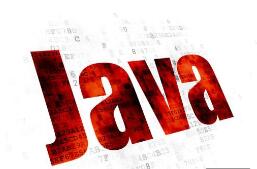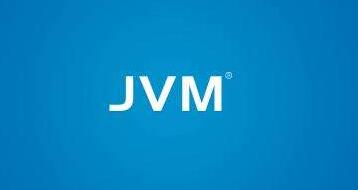Java is an object-oriented programming language that can be used to write cross-platform applications. Java technology has excellent versatility, high efficiency, platform portability, and security. It is widely used in PCs, data centers, game consoles, scientific supercomputers, mobile phones, and the Internet. It also has the world's largest developer professional community. This article mainly introduces java commonly used noun explanations, and specifically follows Xiaobian together to find out.

1, IDE
The Integrated Development Environment (IDE) is an application for providing a program development environment, and generally includes tools such as a code editor, a compiler, a debugger, and a graphical user interface. Integrate code development functions, analysis functions, compilation functions, debugging functions and other integrated development software service suites. All software or software suites (groups) that have this feature can be called integrated development environments. Such as Microsoft's Visual Studio series, Borland's C + + Builder, Delphi series. This program can be run independently or in combination with other programs. The IDE is mostly used to develop HTML applications. For example, many people use IDEs (such as HomeSite, DreamWeaver, etc.) when designing websites because many tasks are automatically generated.
2, JDK
Java Development Kit is a Java language software development kit (SDK).
The JDK contains the JRE. There is a directory named jre in the JDK installation directory. There are two folders, bin and lib. Here you can think of the jvm in the bin, and the lib is the library needed by the jvm job. And jvm and lib are called jre.
The JDK is the core of the entire JAVA, including the Java runtime environment JRE (Java Runtime Environment), a bunch of Java tools (javac/java/jdb, etc.), and Java based libraries (that is, Java APIs include rt.jar).
1SE (J2SE), standard edition, Standard Edition, is a version we usually use, starting from JDK 5.0, renamed Java SE.
2EE (J2EE), enterprise edition, Enterprise Edition, using this JDK to develop J2EE applications, starting from JDK 5.0, renamed Java EE.
3ME (J2ME), micro edition, is mainly used for Java applications on mobile devices and embedded devices. Starting from JDK 5.0, it was renamed Java ME.
3, JRE
Java Runtime Environment, a collection of environments necessary to run JAVA programs, including JVM standard implementations and Java core class libraries.
JRE is a Java runtime environment, not a development environment, so it does not contain any development tools (such as compilers and debuggers)
4, JVM
Java virtual machine
This is the Java virtual machine we often talk about. It is the core part of the cross-platform implementation of Java. All Java programs are first compiled as .class files. This type of file can be executed on a virtual machine.
In other words, the class does not directly correspond to the operating system of the machine, but interacts with the operating system indirectly through the virtual machine. The virtual machine interprets the program to the local system for execution.
Only the JVM can not be implemented as a class, because when interpreting the class, the JVM needs to call the library lib needed for the interpretation, and jre contains the lib library.
The JVM shields the information related to the specific operating system platform, so that the Java program only needs to generate the target code (byte code) running on the Java virtual machine, and it can run on a variety of platforms without modification.

5, JDO
(Java Data Object) is a new specification for Java object persistence, and is a standardized API for accessing objects in a data warehouse. Role: To access objects in a data warehouse
6, JPA
JPA is the abbreviation of Java Persistence API. The Chinese name Java Persistence API is a mapping relationship of JDK 5.0 annotation or XML description object-relational table, and the runtime entity object is persisted to the database.
Sun introduced the new JPA ORM specification for two reasons: First, it simplifies the development of existing Java EE and Java SE applications; Second, Sun hopes to integrate ORM technology to achieve universal integration.
7, POJO
POJO (Plain Ordinary Java Object) Plain Java objects, which are actually ordinary JavaBeans, are shorthand for avoiding confusion with EJBs.
The use of POJO names is to avoid confusion with EJB, and the abbreviation is more direct. There are classes of attributes and their getter setter methods. They have no business logic and can sometimes be used as VO (value-object) or dto (Data Transform Object). Of course, if you have a simple operation attribute is also possible, but there is no business method, you can not carry the connection and other methods.
8, EJB
EJB is the Java EE server-side component model of Sun. The design goals and core applications are to deploy distributed applications. In simple terms, the program that has been written (ie: class) is packaged and executed on the server. With the advantages of Java cross-platform, distributed systems deployed with EJB technology can be not limited to a specific platform. EJB (Enterprise JavaBean) is part of J2EE (javaEE) and defines a standard for developing component-based enterprise multi-applications. Its features include web services support and a core development kit (SDK). In J2EE, Enterprise Java Beans (EJB) is called Java Enterprise Bean and is the core code of Java. They are Session Bean, Entity Bean and Message Driven Bean. After the introduction of EJB 3.0, the entity beans were separated and formed a new specification of JPA.

9, struts
Struts is an open source framework. The purpose of using Struts is to help us reduce the time spent developing Web applications using the MVC design model. Struts is a good choice if we want to mix the advantages of Servlets and JSPs to build scalable applications.
Struts is an open source project sponsored by the Apache Software Foundation (ASF). It was originally a subproject in the Jakarta project and became a top ASF project in March 2004. It adopts JavaServlet/JSP technology to realize the application framework of MVC design pattern based on Java EE web application, and is a classic product in MVC classic design pattern. [1]
Jsf (Java build framework):
JavaServer Faces (JSF) is a standard framework for building Java Web applications (JSR-127 standard defined by the Java Community Process). It provides a component-centric user interface (UI) build method that simplifies the development of Java server-side applications. As promoted by the Java Community Process (JCP), it belongs to the technical specifications in Java EE 5 and is widely supported by vendors.
11, slf4j
SLF4J, the Simple Logging Facade for Java, is not a specific log solution. It only serves a variety of log systems. According to the official statement, SLF4J is a simple facade for the logging system that allows end users to use their desired logging system when deploying their applications.
12, logback
Logback is another open source log component designed by the founder of log4j. Logback is another open source log component designed by the founder of log4j. The logback is currently divided into three modules: logback-core, logback-classic, and logback-access. Logback-core is the base module for the other two modules. Logback-classic is a modified version of log4j. In addition logback-classic complete implementation of SLF4J API so that you can easily replace it with other log systems such as log4j or JDK14 Logging. The logback-access access module integrates with the Servlet container to provide access to logs via Http.

What`s the main features appear into your mind when you look yoga laptop? Lightweight, super thinner, touch screen, 360 rotating, smaller size, like as notebook? You are right, that`s the main reasons why some people also called it as laptop yoga slim or yoga notebook. To OS, just same as Education Laptop-windows operating system, so you can see many windows yoga laptop at the market around the world. In fact, this intel yoga laptop usually is designed for normal jobs, like basic WPS, Photoshop, video or music editing, online learning, shopping, presentation when on a business trip, etc. At our store, you can see 11.6 inch n5100 360 Laptop in metal, 13.3 inch 360 flip laptop, and 14 inch 360 degree rotating laptop, etc. The people who take business trips often or prefer fashion design should like this type device.
There are education laptop also, like 14.1 inch Student Laptop for Hope or government Projects, 15.6 inch competitive celeron business laptop for normal business works, 15 inch 10th or 11th Gaming Laptop for heavier tasks, like teachers, high or university students, etc, 16.1 inch i7 16gb ram 4gb graphics laptop for engineering student, etc
Any other question or other requirements, just contact us freely.
Yoga Laptop,Laptop Yoga Slim,Yoga Notebook,Intel Yoga Laptop,Windows Yoga Laptop
Henan Shuyi Electronics Co., Ltd. , https://www.shuyielectronictech.com